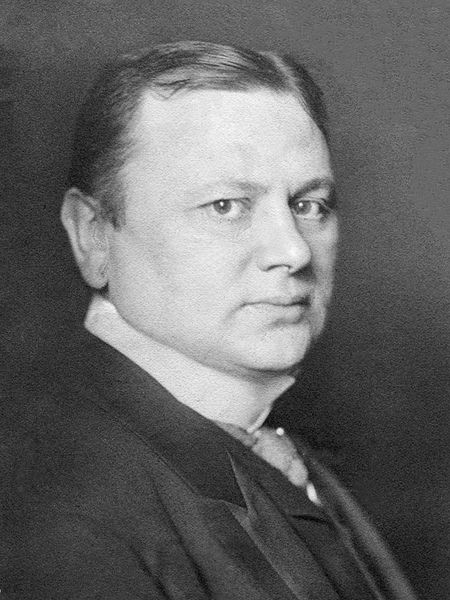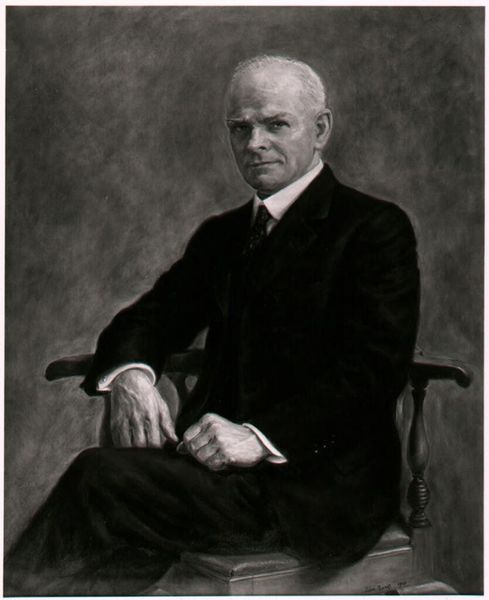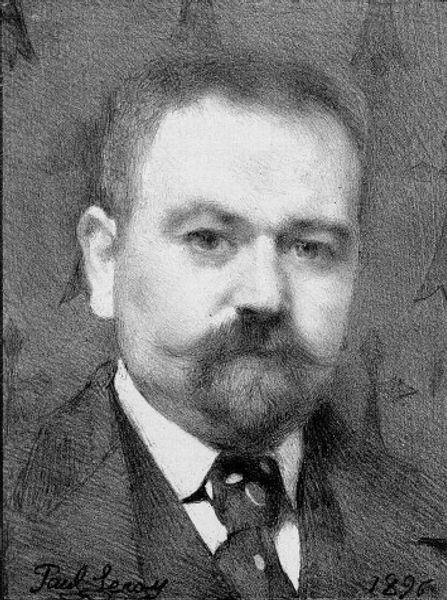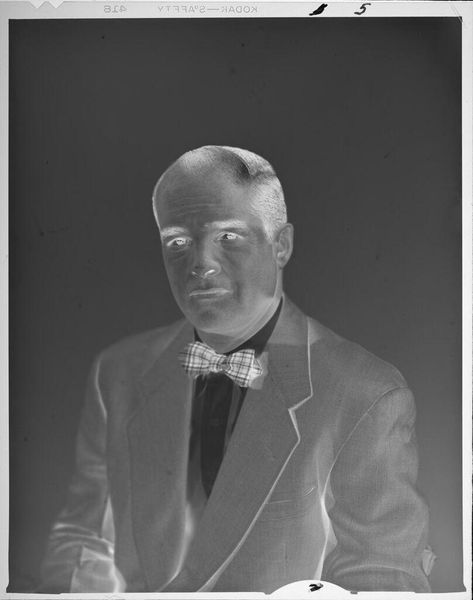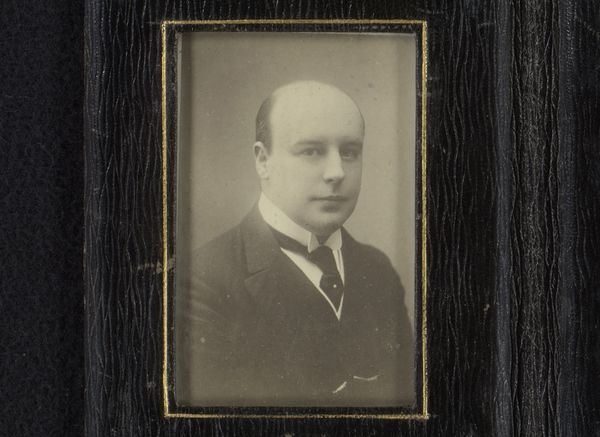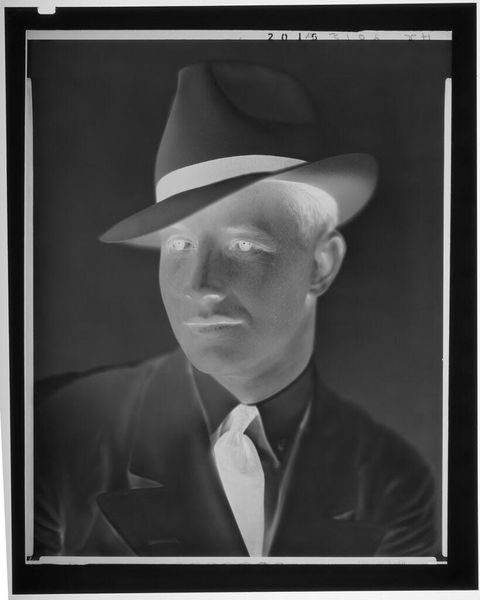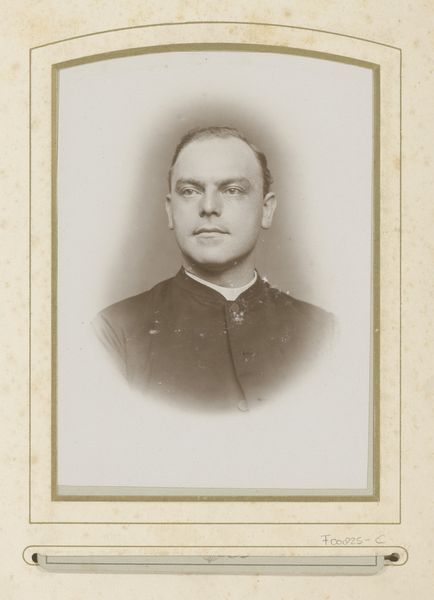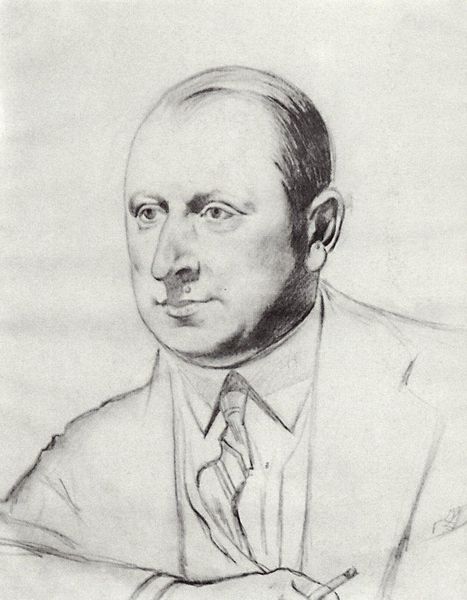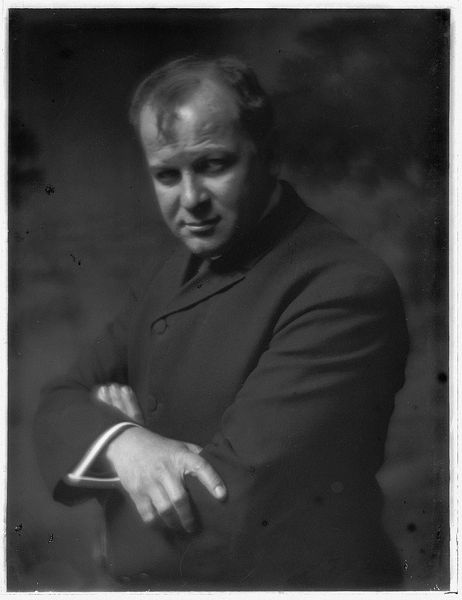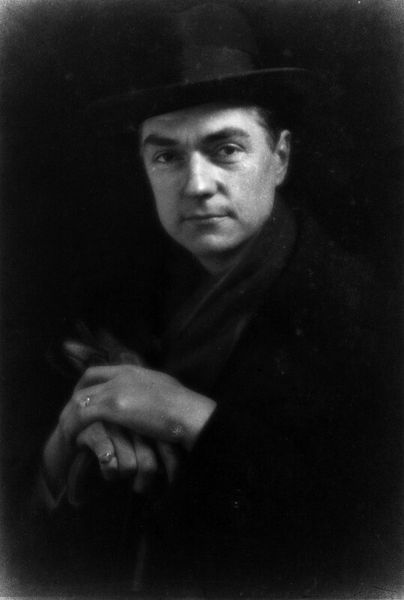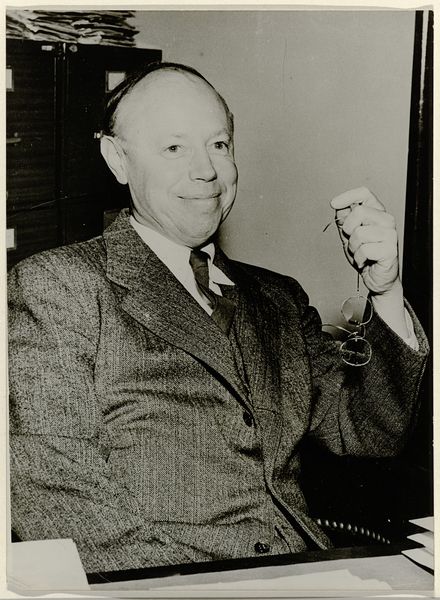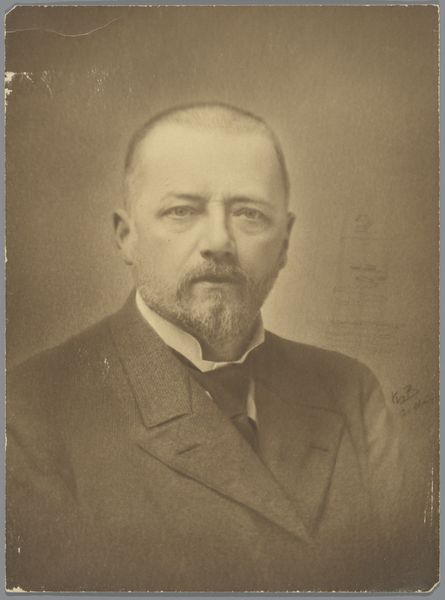
photography
#
portrait
#
head
#
low key portrait
#
portrait image
#
portrait
#
portrait subject
#
german-expressionism
#
photography
#
male portrait
#
portrait reference
#
portrait head and shoulder
#
facial portrait
#
forehead
#
realism
#
celebrity portrait
#
digital portrait
Copyright: Public domain
Editor: Here we have Nicola Perscheid's "Ludwig Roselius" from 1905, a stark black and white photograph. The sitter’s gaze is so direct. I find it quite intense. What do you make of it? Curator: Well, looking at this through a historical lens, it speaks volumes about the shifting social dynamics of early 20th century Germany. Portraiture, traditionally reserved for the aristocracy, started including the burgeoning merchant class. Notice the formal attire. Editor: Yes, very formal. The dark suit and tie seem almost… uniform? Curator: Precisely. It's a carefully constructed image, projecting an aura of respectability and perhaps even power. This isn't just a photograph; it's a statement about Roselius's place in society. Do you know what Roselius was known for at that time? Editor: I think I recall reading he was a coffee merchant, or something along those lines. Curator: Right. And Perscheid was a master of crafting images that conveyed social status. The low-key lighting enhances the sitter’s features, making him appear determined and shrewd. This photograph sells not just Roselius but also the idea of upward mobility through commerce. How does that make you feel when viewing this photograph today? Editor: I guess it makes me consider the role of photography in shaping public perception. It seems like he's not just documenting reality, but carefully constructing it. I hadn't thought about how deliberately this image might have been created! Curator: Indeed. And in doing so, Perscheid contributed to solidifying the image of the successful businessman as a pillar of society. Consider its original exhibition: whose gaze was it meant for? And what societal functions might it have served? Editor: That’s fascinating, really gives me a different way of thinking about the image. Curator: Me too. It highlights the potent interplay between art, social climbing and the power of public imagery.
Comments
No comments
Be the first to comment and join the conversation on the ultimate creative platform.
